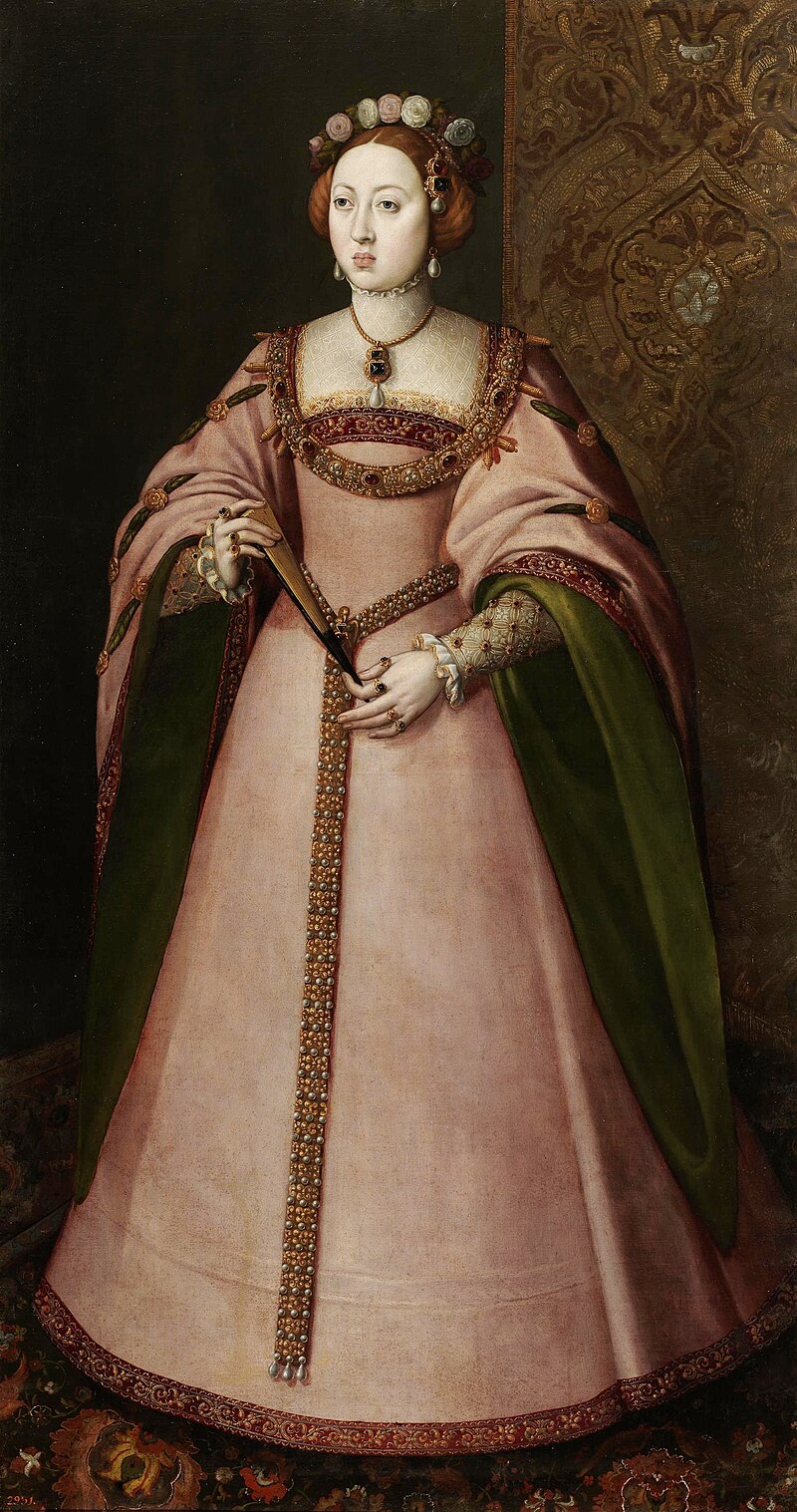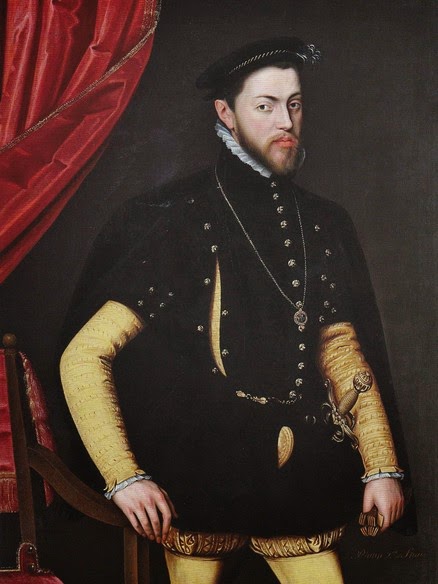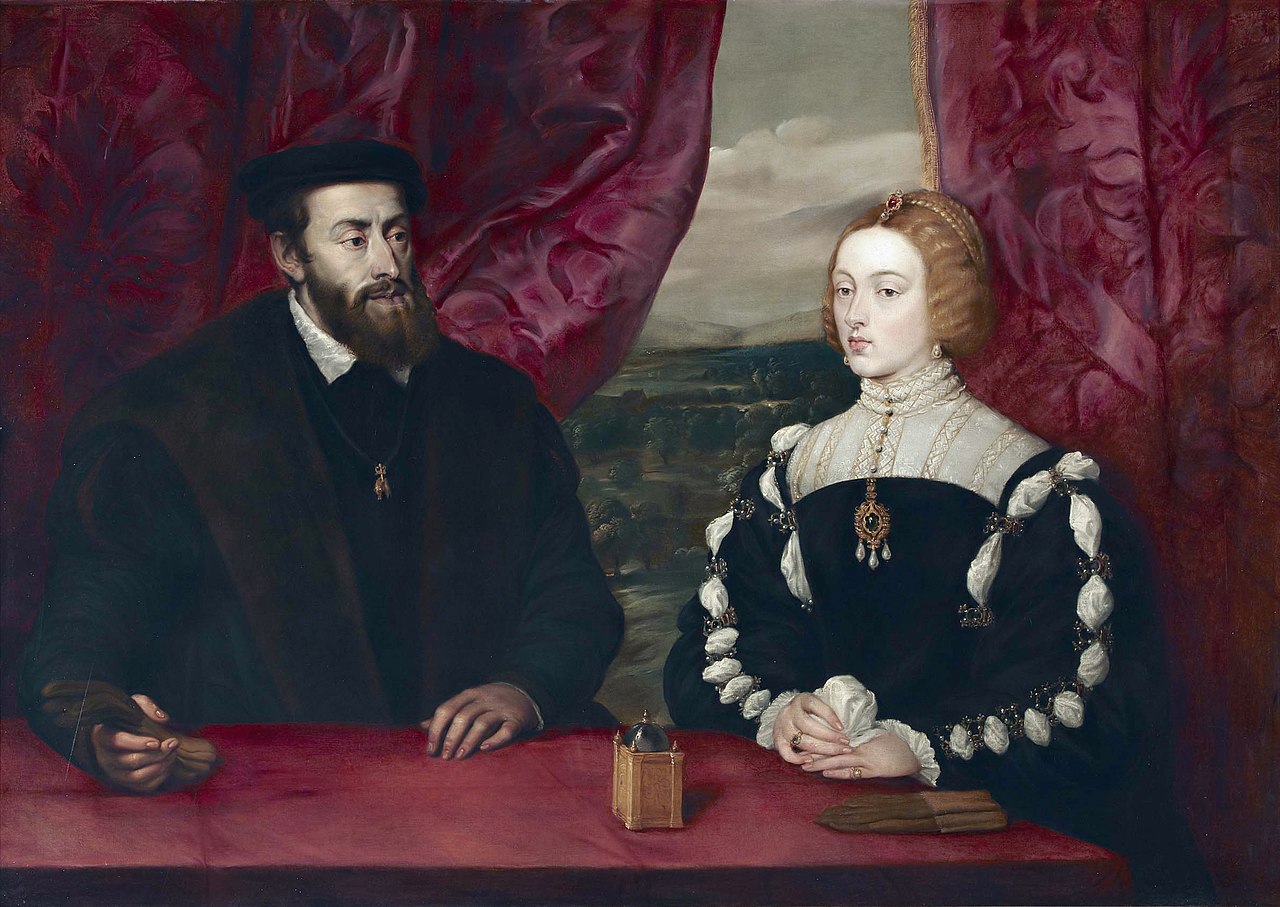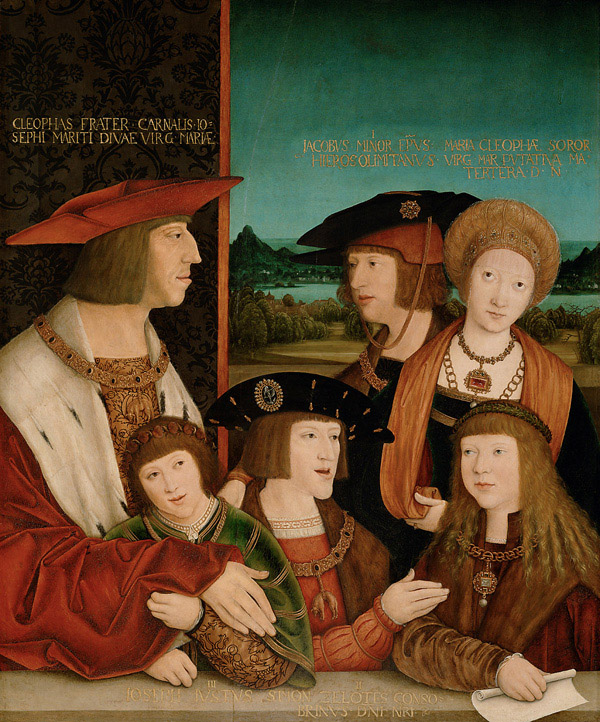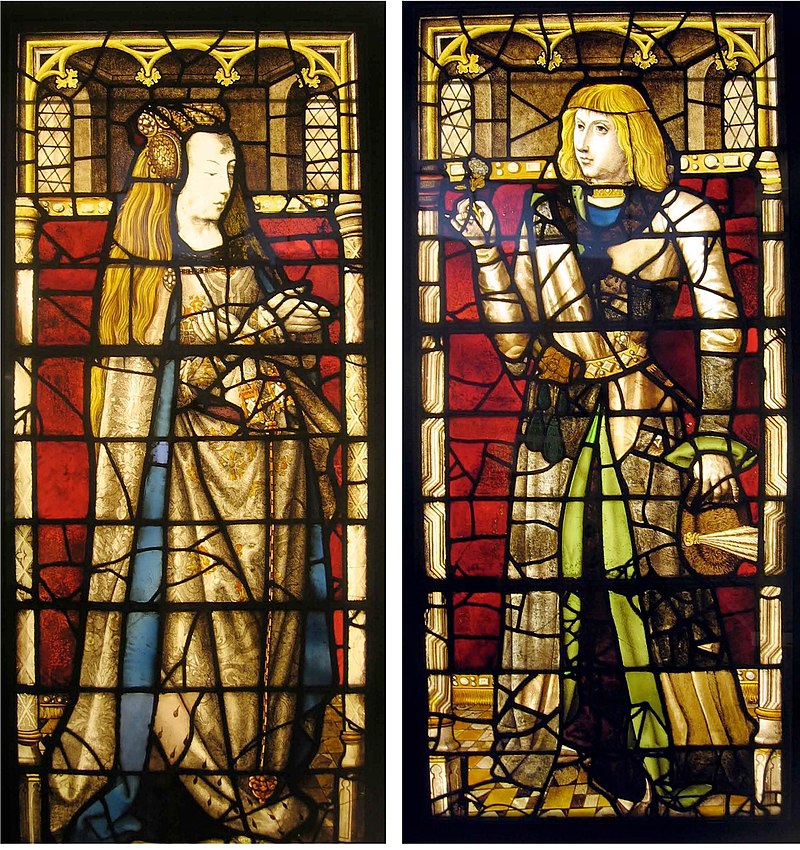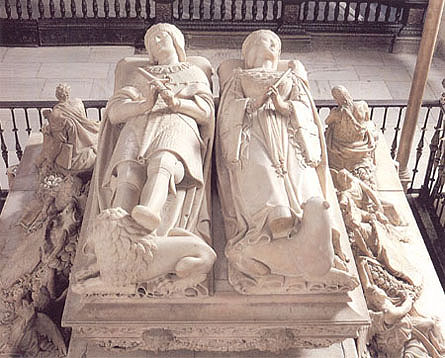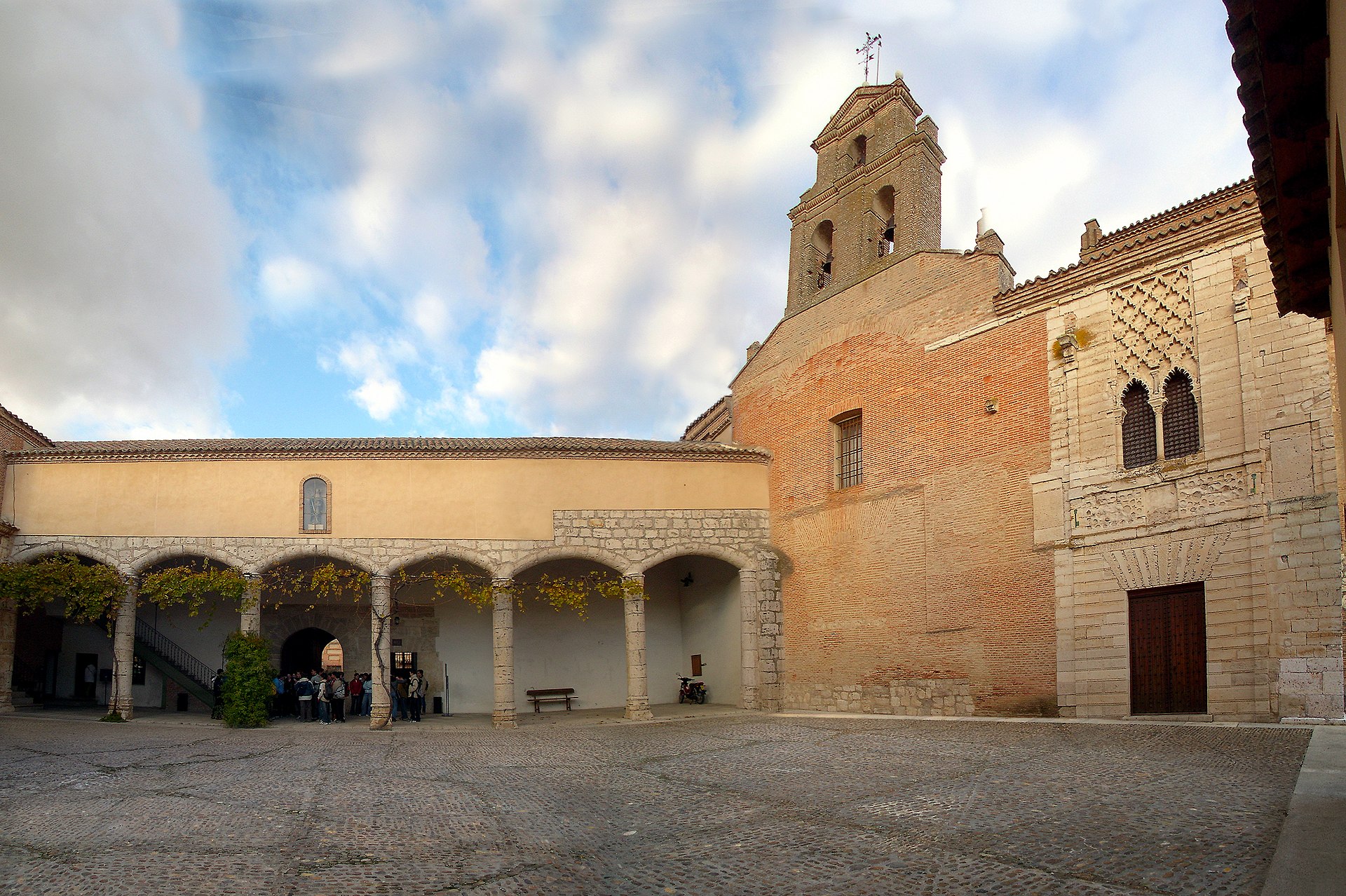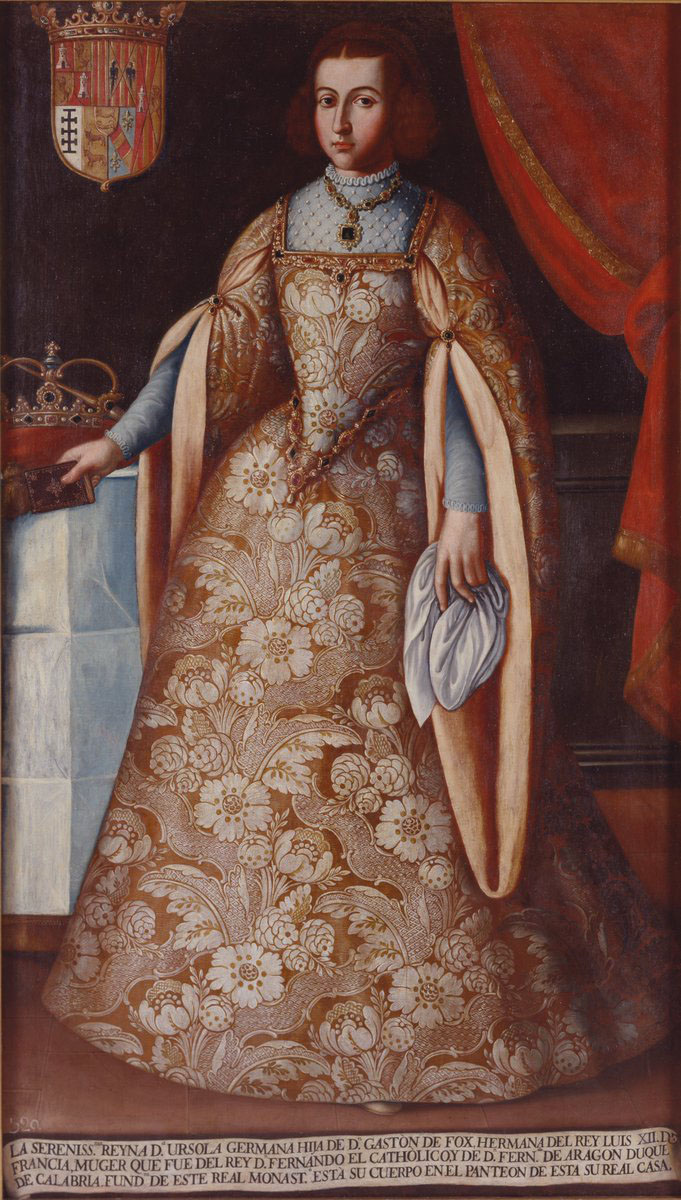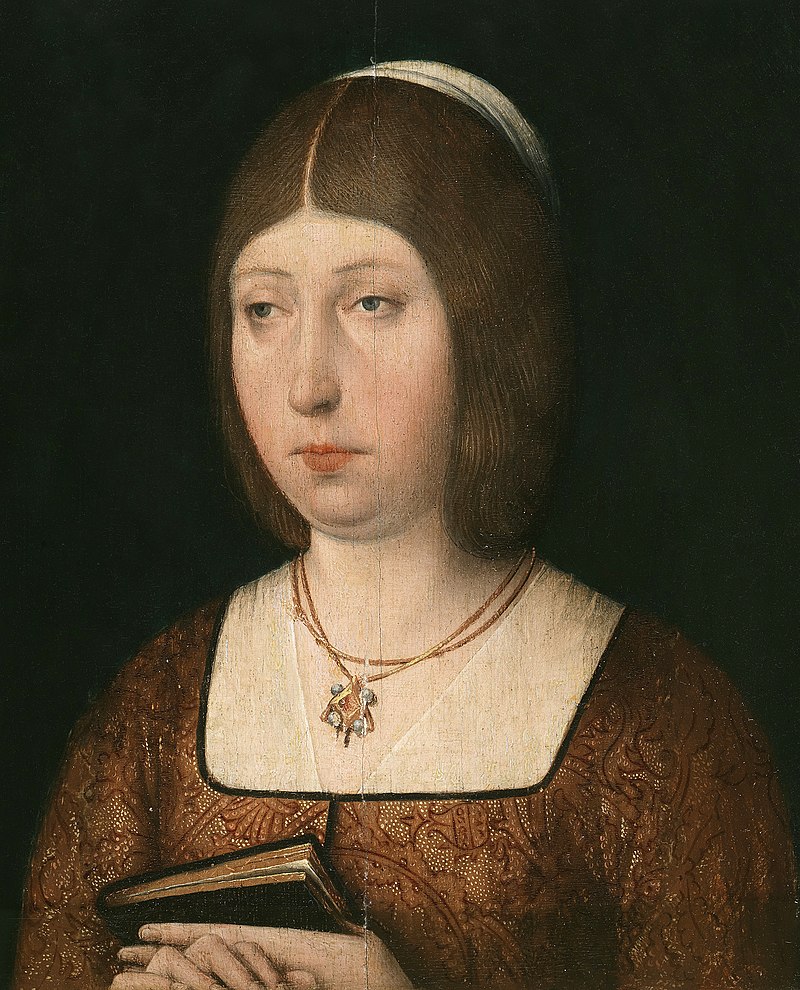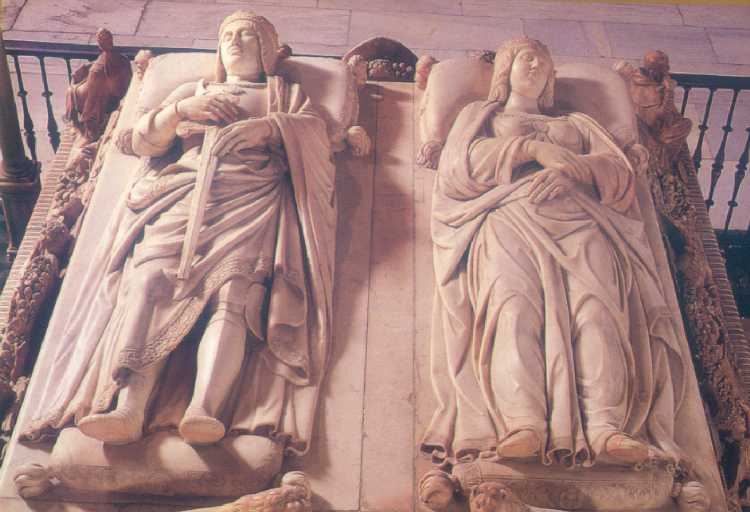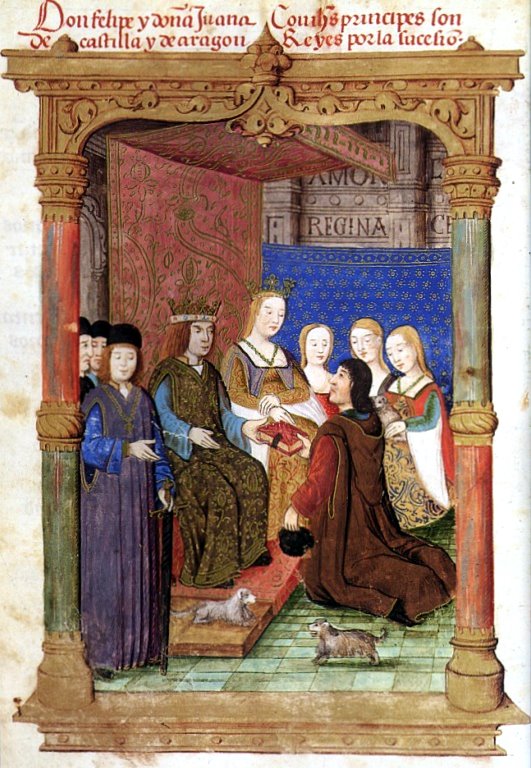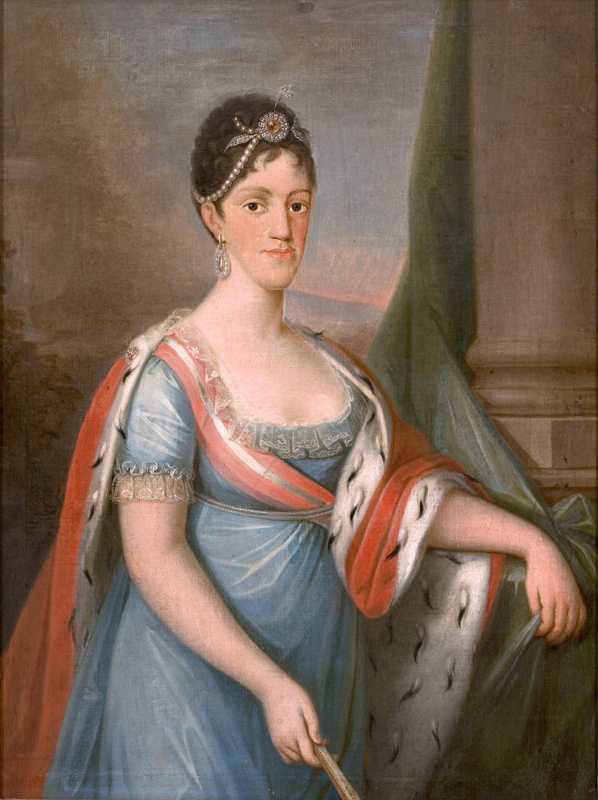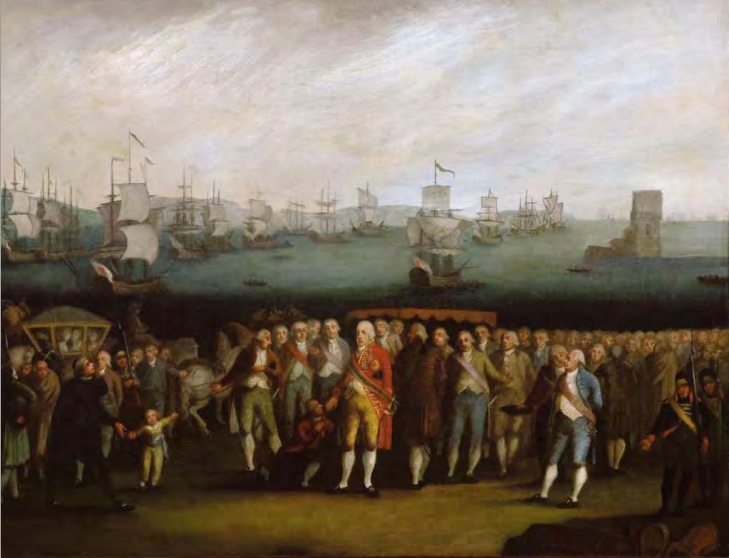by Susan Flantzer
© Unofficial Royalty 2022

Anna of Austria, Queen of Spain; Credit – Wikipedia
Anna of Austria was the niece and the fourth of the four wives of Felipe II, King of Spain, King of Portugal. Born on November 2, 1549, in Cigales, Spain, Anna was the eldest of the six daughters and the eldest of the fifteen children of first cousins Maximilian II, Holy Roman Emperor, King of Hungary and Croatia, Archduke of Austria and Maria of Spain. Anna’s paternal grandparents were Ferdinand I, Holy Roman Emperor and Anne of Bohemia and Hungary. Her maternal grandparents were Charles V, Holy Roman Emperor and King of Spain, among many other titles, and Isabella of Portugal.

Holy Roman Emperor Maximilian II, his wife Maria of Spain with their three eldest surviving children Anna, Rudolf, and Ernst in the cradle; Credit – Wikipedia
Anna had fourteen younger siblings:
- Archduke Ferdinand of Austria (1551 – 1552), died in infancy
- Rudolf II, Holy Roman Emperor (1552 – 1612), unmarried
- Archduke Ernst of Austria (1553 – 1595), unmarried
- Archduchess Elisabeth of Austria (1554 – 1592), married Charles IX, King of France, had one daughter
- Archduchess Marie of Austria (1555 – 1556), died in infancy
- Matthias, Holy Roman Emperor (1557 – 1619), married Anna of Tyrol, no children
- Maximilian III, Archduke of Austria (1558 – 1618), unmarried
- Albrecht VII, Archduke of Austria (1559 – 1621), married his first cousin Isabella Clara Eugenia of Spain, had three children who died in infancy
- Archduke Wenceslaus of Austria (1561 – 1578), unmarried, died in his teens
- Archduke Friedrich of Austria (1562 – 1563), died in infancy
- Archduchess Marie of Austria (born and died 1564), died in infancy
- Archduke Karl of Austria (1565 – 1566), died in infancy
- Archduchess Margaret of Austria (1567 – 1633), a Poor Clare nun under the name of Sister Margaret of the Cross at the Monastery of Santa Clara de las Descalzas Reales in Madrid, Spain
- Archduchess Eleanor of Austria (1568 – 1580), died in childhood
As the eldest daughter of the Holy Roman Emperor, Anna was considered a desirable royal wife. Her parents thought that a Spanish marriage would strengthen the relationships between the Austrian branch and the Spanish branch of the House of Habsburg. Talks began to arrange a marriage between Anna and her first cousin Carlos, Prince of Asturias, the only son of Felipe II, King of Spain and his deceased first wife and double first cousin Maria Manuela of Portugal. However, the marriage plans were scrapped when Carlos died in 1568 at the age of twenty-three.

Felipe II, King of Spain, circa 1568; Credit – Wikipedia
Later in 1568, Felipe II’s third wife Elisabeth of Valois died a few hours after giving birth to a premature daughter who also died. Felipe was a widower for a third time, with two young daughters who had lost their mother. He planned to remarry because he no longer had a male heir. Despite being his niece and twenty-two years younger than him, Felipe decided to marry Anna. The consanguinity or close genetic relationship between Felipe and his niece Anna caused Pope Pius V to have serious reservations but eventually he granted the necessary dispensation. The marriage contract was signed in Madrid on January 24, 1570, and a proxy wedding was held at Prague Castle on May 4, 1570.
In the autumn of 1570, Anna traveled from Austria to Spain accompanied by her brothers Albrecht and Wenceslaus. When Anna traveled through the English Channel, Queen Elizabeth I of England sent her admirals, Charles Howard and William Wynter, to offer support and safe passage. Anna arrived in Spain on October 3, 1570. Anna and Felipe were married in person on November 14, 1570, in the chapel of the Alcázar of Segovia. Anna’s new household was under the direction of Margarita de Cardona, who Anna knew well as she had previously been the lady-in-waiting of her mother Maria of Spain, Felipe II’s sister.

Anna and Felipe II’s only surviving child, the future Felipe III, King of Spain; Credit – Wikipedia
Anna and Felipe had five children but only one survived childhood:
- Ferdinand, Prince of Asturias (1571 – 1578), died in childhood of dysentery
- Infante Carlos Lorenzo of Spain (1573 – 1575), died in childhood
- Diego, Prince of Asturias (1575 – 1582), died in childhood of smallpox
- Felipe III, King of Spain (1578 – 1621), succeeded his father as king, married Margaret of Austria, had eight children
- Infanta Maria of Spain (1580 – 1583), died in childhood

Isabella Clara Eugenia and Catalina Micaela, Anna’s stepdaughters, the daughters of Felipe II and his third wife Elisabeth of Valois; Credit – Wikipedia
Anna was the stepmother of Felipe’s two daughters from his third marriage to Elisabeth of Valois who died in 1568:
- Infanta Isabella Clara Eugenia of Spain (1566 – 1633), married her first cousin Albrecht VII, Archduke of Austria, no children
- Infanta Catalina Micaela of Spain (1567 – 1597), married Carlo Emanuele I, Duke of Savoy, had ten children
Contemporary accounts show that Anna and Felipe’s marriage was happy and that Anna was Felipe’s most beloved wife. There are no records of Felipe having lovers during his marriage to Anna. Anna was a good stepmother to Isabella Clara Eugenia and Catalina Micaela. She also managed to ease some of the rather stiff atmosphere of the Spanish court.
In 1578, King Sebastian of Portugal from the House of Aviz was killed in battle without any heirs, causing a succession crisis. He was succeeded by his elderly great-uncle Henrique, a Cardinal of the Roman Catholic Church who had no descendants because he had taken a vow of chastity as a priest. When Cardinal-King Enrique died two years later, three grandchildren of Manuel I, King of Portugal (1469 – 1521) claimed the Portuguese throne. Ultimately, the grandchild who was successful in his claim was Felipe II, King of Spain. The Iberian Union was the union of the Kingdom of Spain and the Kingdom of Portugal that existed between 1580 and 1640, under the Spanish Habsburg kings Felipe II, Felipe III, and Felipe IV who reigned in Portugal under the names and regnal numbers Filipe I, Filipe II, and Filipe III.

Tomb of Anna of Austria, Queen of Spain in the Pantheon of the Kings, Royal Basilica of San Lorenzo de El Escorial; Credit – www.findagrave.com
In 1580, Felipe’s court was in the Spanish city of Badajoz, close to the border with Portugal, because of Felipe’s claim to the Portuguese throne. While in Badajoz, Anna died from influenza at the age of 30, on October 26, 1580, eight months after giving birth to her youngest child Maria. Initially, Anna was buried in the Royal Monastery of Santa Ana in Badajoz. Several years later, Anna’s remains were transferred to the Pantheon of Kings in the Royal Basilica of San Lorenzo de El Escorial in El Escorial, Spain. Anna’s entrails were allowed to remain buried in the floor of the choir at the Royal Monastery of Santa Ana in Badajoz, and they remain buried there today.
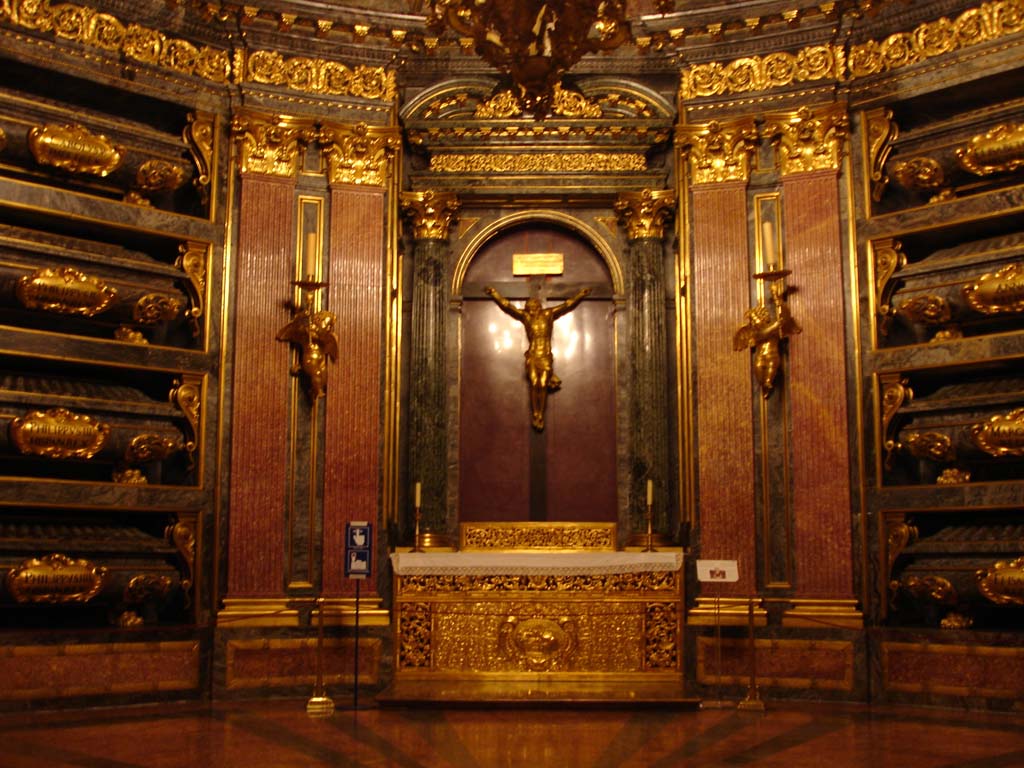
The Pantheon of Kings where Anna and Felipe II are interred; Credit – By Bocachete – Own work, Public Domain, https://commons.wikimedia.org/w/index.php?curid=6493547
Felipe never remarried. He survived Anna by eighteen years, dying after a long illness, at the age of 71 on September 13, 1598, in his chambers at the Royal Site of San Lorenzo de El Escorial. He was buried in the Pantheon of Kings in the Royal Basilica of San Lorenzo de El Escorial.
This article is the intellectual property of Unofficial Royalty and is NOT TO BE COPIED, EDITED, OR POSTED IN ANY FORM ON ANOTHER WEBSITE under any circumstances. It is permissible to use a link that directs to Unofficial Royalty.
Works Cited
- En.wikipedia.org. 2022. Anna of Austria, Queen of Spain – Wikipedia. [online] Available at: <https://en.wikipedia.org/wiki/Anna_of_Austria,_Queen_of_Spain> [Accessed 18 August 2022].
- En.wikipedia.org. 2022. Maximilian II, Holy Roman Emperor – Wikipedia. [online] Available at: <https://en.wikipedia.org/wiki/Maximilian_II,_Holy_Roman_Emperor> [Accessed 18 August 2022].
- Es.wikipedia.org. 2022. Ana de Austria (reina de España) – Wikipedia, la enciclopedia libre. [online] Available at: <https://es.wikipedia.org/wiki/Ana_de_Austria_(reina_de_Espa%C3%B1a)> [Accessed 18 August 2022].
- Flantzer, Susan, 2019. King Philip II of Spain. [online] Unofficial Royalty. Available at: <https://www.unofficialroyalty.com/king-philip-ii-of-spain/> [Accessed 18 August 2022].
- Louda, Jiri and Maclagan, Michael, 2002. Lines of Succession. London: Little, Brown.

